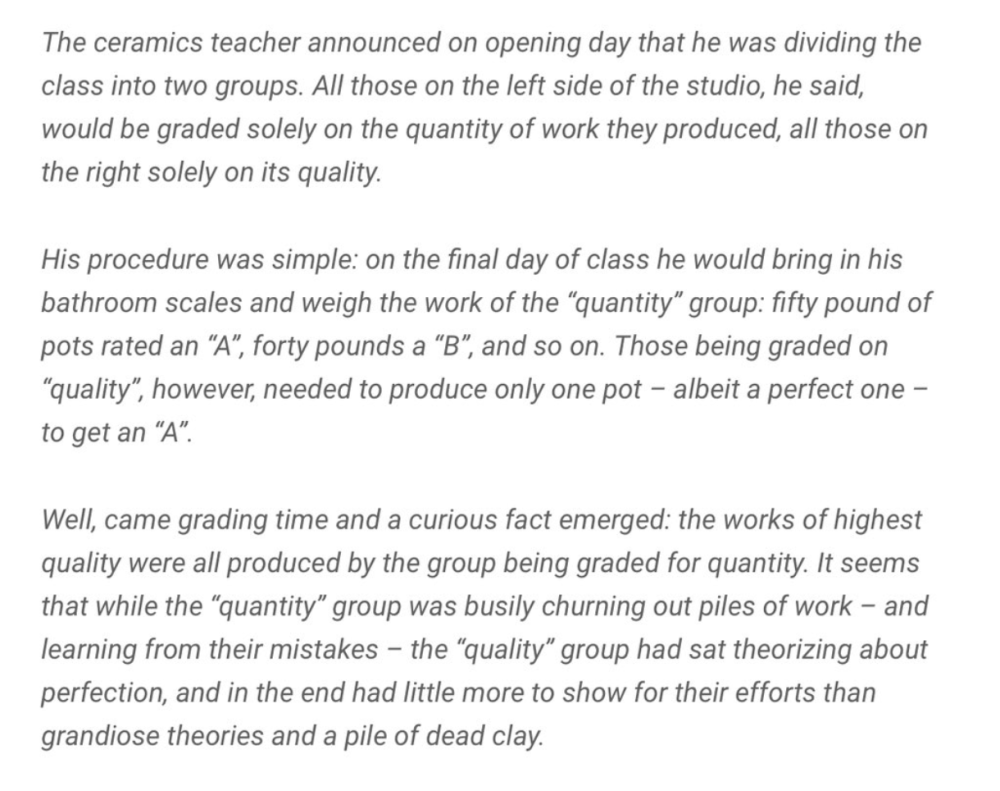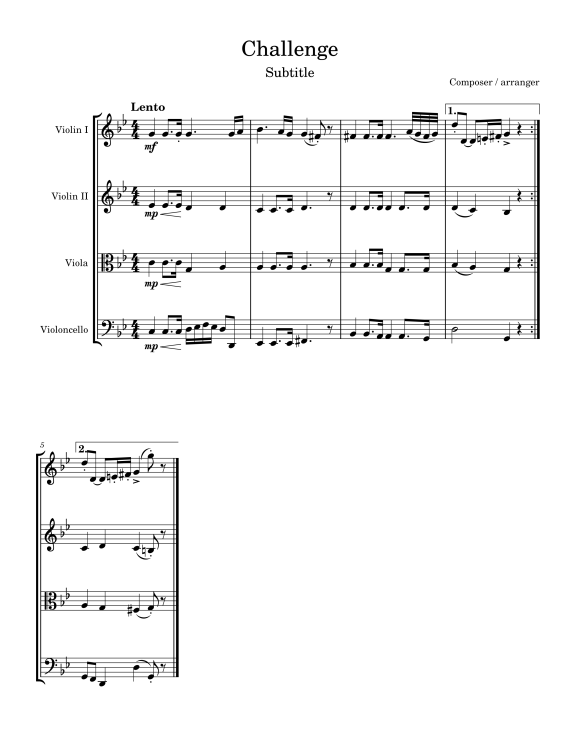All Activity
- Past hour
-
luderart started following Soliloquy for Organ No. 7
-
This is my Soliloquy for Organ No. 7. Like my soliloquies for organ No.s 2-6 and my two sets of sententiae for organ, it is composed for manuals only.
- Today
-
Hi @Fruit hunter! What a monumentally huge work! It's full of pomp and often very menacing and dark, but it's also not without its bright spots. I like your use of scoops/bends in the piece. I understand that in order to get Musescore 4 to perform those satisfactorily you had to use guitar notation? I'm interested in using the effect. I actually listened to your piece while reading a chapter from a PDF book on my laptop. Otherwise, I would probably not have had the patience to sit through a 40 minute work! LoL I love the dramatic tutti orchestral hits with what sounds to be an anvil accompanying (although I don't see it in the score at the beginning - I assume one of the percussionists must have switched instruments?). Nice ending! Quite an unusual progression of chords before the final bang! It sounds very incidental in many spots, often playing the role of background music for the scene you described being played out in the foreground (I presume). Did you come up with the story and characters yourself? You're quite the creative mastermind if so! Thanks for sharing!
-
Forgot to add, here's a couple of things that changed from the original; 1. Original main key was F# Minor - Current key is Eb Minor (1.5 steps lower to enrich the lower registers) 2. Ensured that nuances in the rhythm were more accentuated where needed (For example, at m. 108, where the motif rhythm changes to half note, half rest, then completes the phrase again, I've, rather than having only the melody instruments doing that rhythm, have made the entire ensemble follow suit) 3. completed a large amount of audio re-mastering with the playback to balance the ensemble better 4. Multiple areas have been re-done in regards to placing emphasis on melody, changing voices in harmonies, and more. Off the top of my head, that's what I remember altering in the score. I know that I did more, but can't remember every change, at this time.
-
.thumb.png.8b5b433a341551e913a34392660bc95b.png)
ACO's Second Album
PeterthePapercomPoser replied to AngelCityOutlaw's topic in Incidental Music and Soundtracks
Hey @AngelCityOutlaw! My ranking of these tracks from my favorite to least favorite is this: The title track - Fortune & Thrill Seekers Sleepless in Shangri-La Tropical Punch Kali Yuga I think Fortune & Thrill Seekers and Sleepless in Shangri-La seem to me to be the most melodically defined and lyrical. Tropical Punch is melodious but in a more simplistic way while Kali Yuga seems to me to be the least well defined melodically. Great job though, overall! I really enjoyed listening to these! Thanks for sharing. -
Hey @Alex Weidmann! Beautiful job once again! I love the way you scored the rich harmonies of this menuet. The format of starting with the woodwinds, switching to the strings, then to the brass, then combining all the forces together was a really great choice that brought much body to your orchestration! Great job and thanks for sharing!
-
I appreciate the reminder that perfection shouldn't be the goal. I often find myself going back to improve on things where I'm told that I should, when given feedback on some of my work. I went ahead and pull the files for the original score to add here as a reference, should you feel you'd like to re-visit that version, as it's no longer available on the previous post. 🙂 The_Hallowed_Knights_Journey_-_UncleRed99__Kyle_Hilton.mp3 The_Hallowed_Knights_Journey_-_UncleRed99__Kyle_Hilton.pdf
-

"Turmoil" for Brass Quintet | Kyle Hilton (UncleRed99)
UncleRed99 replied to UncleRed99's topic in Chamber Music
I appreciate the insight, Peter! I'll keep this in mind moving forward 🙂 -
Tractor Kharido joined the community
-
Hi @Nico_ and welcome to the forum! I think this is a pretty nice Baroque-styled invention! I don't see/hear anything about it that resembles VGM or SNES music? But it does make me question your intent with this music. To me it is very clearly pre-classical music rather than music meant as a background to a video game level or media music. I think the piece is coming along quite nicely in those terms! Keep going and thanks for sharing!
-
Hello @Isen Lark and welcome to the forum! Your video has a high production value both visually and aurally! The music is very emotional, although sometimes it strays close to cliche when the bass notes in each measure always move down by step as in the famous Lament bass. Like Henry said, it would enrich the music if you modulated, or possibly if you used more inversions or unusual harmonies with foreign bass notes. Like, I like to sometimes have a chord with a bass note underneath that's not the root, 3rd nor 5th or the chord but something more unusual like the 7th, 9th or 11th. That kind of approach to harmony can really bring some unusual sonorities into your music! Thanks for sharing this enjoyable piece!
- 2 replies
-
- cinematic
- cinematic music
-
(and 1 more)
Tagged with:
-
Hey @UncleRed99! I know I've heard and reviewed this piece before, but being only a casual listener from the sidelines, I can't tell what differences or improvements you might have made. Nor can I tell if the improvements actually improve my listening experience or possibly, if they detract from it. I feel like delving deeply into the score and searching for the differences would be an endeavor that would require quite a bit more effort on my part (seeing as how I'd have to compare it to the original or however many previous versions of this piece you've made before this). It's the law of diminishing returns in music. In addition, I thought I'd share a pertinent parable about art in general that I think might be applicable or at least hopefully helpful to you: (from the book "Art & Fear: Observations On the Perils (and Rewards) of Artmaking") I find that this parable really helps me in my approach to composition and work ethic in general. I try to apply any lessons I learn to new pieces and to churn out a greater quantity of work with the confidence that the things I learn from previous works will manifest themselves in future works. I also recognize that trying to perfect old pieces with endless reworks would not be conducive to improving. In terms of time management, I believe my time is spent much more wisely writing new pieces. I don't know if any of that hits home for you or not. But I thought I'd at least share my own reflections on the subject and hope that that could be helpful for you in some way. If you disagree with my work ethic or with the parable, that's fine too. Thanks for sharing!
- Yesterday
-
Schumann orchestration (Child Falling Asleep)
Alex Weidmann replied to Alex Weidmann's topic in Orchestral and Large Ensemble
Thanks Mark. May give that a try. -
.thumb.png.f5c7c1a6a554eeeefdce321d089f5901.png)
A bit off... (best song I've ever made)
therealAJGS replied to therealAJGS's topic in Incidental Music and Soundtracks
-
Schumann orchestration (Child Falling Asleep)
MJFOBOE replied to Alex Weidmann's topic in Orchestral and Large Ensemble
Hi Alex .... I know getting the full resonance of a piano in an orchestration is a real challenge. I have to say that I do miss the warm lower voices. The upper woodwinds in the beginning (for me) need some warmth underneath (maybe from the lower strings). Mark -
Never before orchestrated Prelude by Ravel
Alex Weidmann replied to Alex Weidmann's topic in Orchestral and Large Ensemble
Thanks Peter and Mark! Just hope I can get it performed somehow. I'm working on Dvorak's Five Bagatelles for my next orchestration (which is proving a bit of a nightmare!) - Last week
-
Thanks for the comments! Yeah, the retransition from D minor to A minor is one of the spots I was concerned about. I had originally written it with a B flat 7 instead of an F7 in the second ending. So, the A7 resolving by deceptive cadence to a B flat, which then gets reinterpreted as a Neapolitan chord to lead to the dominant in A minor. But the modulation sounded too quick and unconvincing to me, so I tried to the F7 (functioning as a German sixth) instead, but I worry that the logic of the A7 -> F7 is weak. I've listened to it a bunch and go back and forth on whether I think it works. I may try tinkering with it. Thanks for the suggestions!
-
Never before orchestrated Prelude by Ravel
MJFOBOE replied to Alex Weidmann's topic in Orchestral and Large Ensemble
Well done ..... a lovely well balanced serene orchestration. Mark -
Quick little harmony/counter-point mini-challenge :)
Some Guy That writes Music replied to UncleRed99's topic in Challenges
-
Thank you so much, my dear friend. I truly appreciate your attention and your appreciation. This sonata is really like a personal thank-you letter to my beloved composer, Mozart. You will certainly find many elements from his sonatas, as you said, and I tried to stay as true to his style as possible. I have a special fondness for the Andante — I believe it’s the most inspired of all the movements, with passages that even I can hardly believe I managed to write, and it feels like the part that carries something of myself.
-
Hey @Aiwendil! Very nice and idiosyncratic rag! It does sound exactly like a haunted castle. I know that sometimes the titles of rags don't really have any distinguishing similarity to the actual music. But not so with this piece - I could even imagine it being played on the castle's church organ! Never thought that a rag would work well on a church organ. I think it would make it more creepy and characteristic. Regarding any awkward moments, perhaps you thought that measure 60 is too abrupt? To me it sounds find to go from C major back to A minor. For me, the middle section starting at measure 85 is perhaps too long and the retransition back to the main theme is a bit haphazard. Originally in the 1st ending to that section you end on a D minor chord, but the 2nd ending suddenly injects a F7 chord in place of the D minor (and directly after an A7). Perhaps you could make the 2nd ending include two measures instead of just one and replace the C# in the A chord with a C natural to more clearly prepare the listener to the retransition to A minor and recontextualizing that A chord as a pre-dominant (in essence with the same function as the D minor would have had in its place if the destination was A). That's my take on that. Btw - great intro and great conclusion! Definitely a strong piece here. Thanks for sharing!
-
Hey @Alex Weidmann! Very nice orchestration! About the rubato fermatas: in my experience, the use of the various different fermatas available in Musescore 4 have had sporadic effects upon the actual tempo at any given time. If you want to guarantee any specific tempo contractions or elongations I think the best way to do that would be with hidden additional tempo markings each beat. That would just be my own personal approach to that. I love this piece. Just fyi I compared your orchestration to this recording I found on YT: Ravel Prelude in A minor I think you did a wonderful job distributing the melody and accompaniment to different instruments and making the somewhat large instrumental forces sound like a chamber ensemble. Great job and thanks for sharing!
-
.thumb.png.8b5b433a341551e913a34392660bc95b.png)
"Turmoil" for Brass Quintet | Kyle Hilton (UncleRed99)
PeterthePapercomPoser replied to UncleRed99's topic in Chamber Music
Hey @UncleRed99! Nice Brass Quintet! Definitely an ensemble I should write something for in the future considering I played Trumpet and French Horn. I think my favorite measures in this piece are 16 and 44 because in those measures you abandon the chordal approach to the music where it sounds like the music is just an elaborate but slow (I mean a slow harmonic rhythm) chord progression. Overall measures 12 - 16 and 40 - 44 are the most awesome to me, with a unique approach to melody, rhythm and scoring (I especially like how you create a natural delay effect where the 2nd Trumpet imitates the 1st at a delay of a 16th note. Where there's room for improvement is something I already touched on above: the harmonic rhythm seems like it's usually one or two chords per measure. You don't necessarily need more chords or anything, just varying the harmonic rhythm to different note values could be enough. And you could also have built some kind of accompanimental ostinato to kind of set down a cool groove underneath the melody to create a banger. I also feel like there isn't really a long leading song-like melody that really sticks in my head that I remember easily after listening to this. I've listened to this piece a few times while writing this review and somehow I still feel this way about it. Perhaps there are what you might consider melodies but they're just not unified enough or self-similar enough to really stick in my head? Or maybe I just have fringe expectations about this? Or perhaps they're interspersed too much with passages that are dominated by too many long notes and chords that don't seem to create a melodic impression for the listener? That's my impression. Thanks for sharing! -
Henry Ng Tsz Kiu started following song
-
PCC started following Piano sonata no 1 in B flat major ( Mozartian style )
-
Piano sonata no 1 in B flat major ( Mozartian style )
PCC replied to Vasilis Michael's topic in Piano Music, Solo Keyboard
Quality dramatic writing. I like the sudden fast thirds in the third movement, really captivating. Some of the more technical passages especially the first movement sound more like Hummel or Clementi at times. Maybe I'm just cynical but you have quite a few passages that are directly modeled from parts of Mozart's sonatas. They are not out of place but it's quite obvious, I'd imagine, to anyone familiar with his sonatas. I like the places where your originality shines the most, I'd point out the harmony progressions and transitions I like. -
therealAJGS started following song







